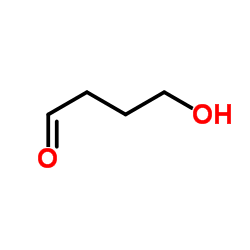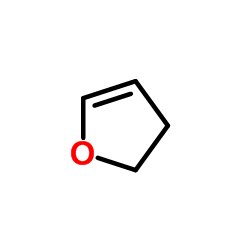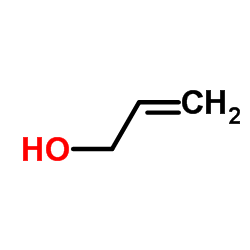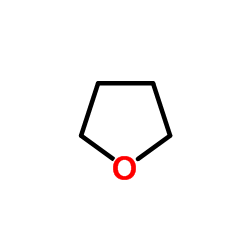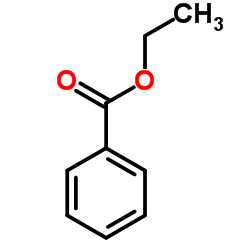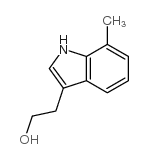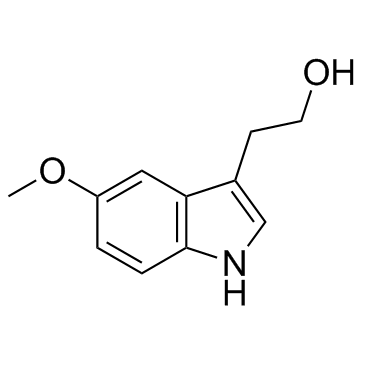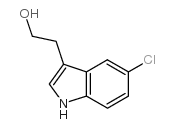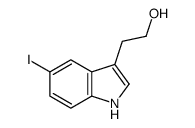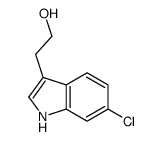13436-46-9
| 中文名 | 2-乙氧基四氢呋喃 |
|---|---|
| 英文名 | 2-ethoxyoxolane |
| 英文别名 |
2-Aethoxy-tetrahydro-furan
MFCD00005360 EINECS 236-569-9 Furan,2-ethoxytetrahydro 2-ethoxy-tetrahydro-furan 2-ethoxytrihydrofuran |
| 密度 | 0.94g/cm3 |
|---|---|
| 沸点 | 171ºC at 760mmHg |
| 分子式 | C6H12O2 |
| 分子量 | 116.15800 |
| 闪点 | 16.1ºC |
| 精确质量 | 116.08400 |
| PSA | 18.46000 |
| LogP | 1.15940 |
| 蒸汽压 | 0.697mmHg at 25°C |
| 折射率 | n20/D 1.414(lit.) |
| 分子结构 | 摩尔折射率:31.23 2、 摩尔体积(m3/mol):122.2 3、 等张比容(90.2K):279.3 4、 表面张力(dyne/cm):27.2 5、 极化率(10-24cm3):12.38 |
| 计算化学 | 1.疏水参数计算参考值(XlogP):0.9 2.氢键供体数量:0 3.氢键受体数量:2 4.可旋转化学键数量:2 5.互变异构体数量:无 6.拓扑分子极性表面积18.5 7.重原子数量:8 8.表面电荷:0 9.复杂度:63.5 10.同位素原子数量:0 11.确定原子立构中心数量:0 12.不确定原子立构中心数量:1 13.确定化学键立构中心数量:0 14.不确定化学键立构中心数量:0 15.共价键单元数量:1 |
| 更多 | 1.性状:不可用 2.密度(g/mL,25/4℃):0.908 3.相对蒸汽密度(g/mL,空气=1):不可用 4.熔点(ºC):不可用 5.沸点(ºC,常压):170-172 6.沸点(ºC,5.2kPa):不可用 7.折射率:1.414 8.闪点(ºC):不可用 9.比旋光度(º):不可用 10.自燃点或引燃温度(ºC):不可用 11.蒸气压(kPa,25ºC):不可用 12.饱和蒸气压(kPa,60ºC):不可用 13.燃烧热(KJ/mol):不可用 14.临界温度(ºC):不可用 15.临界压力(KPa):不可用 16.油水(辛醇/水)分配系数的对数值:不可用 17.爆炸上限(%,V/V):不可用 18.爆炸下限(%,V/V):不可用 19.溶解性:不可用 |
|
SECTION 1: Identification of the substance/mixture and of the company/undertaking Product identifiers Product name: 2-Ethoxytetrahydrofuran REACH No.: A registration number is not available for this substance as the substance or its uses are exempted from registration, the annual tonnage does not require a registration or the registration is envisaged for a later registration deadline.
CAS-No.: 13436-46-9 SECTION 2: Hazards identification Classification of the substance or mixture Classification according to Regulation (EC) No 1272/2008 Flammable liquids (Category 2), H225 For the full text of the H-Statements mentioned in this Section, see Section 16. Classification according to EU Directives 67/548/EEC or 1999/45/EC F Highly flammableR11 For the full text of the R-phrases mentioned in this Section, see Section 16. Label elements Labelling according Regulation (EC) No 1272/2008 Pictogram Signal wordDanger Hazard statement(s) Highly flammable liquid and vapour. Precautionary statement(s) Keep away from heat/sparks/open flames/hot surfaces. - No smoking. Supplemental Hazardnone Statements Other hazards - none SECTION 3: Composition/information on ingredients Substances Formula: C6H12O2 Molecular Weight: 116,16 g/mol CAS-No.: 13436-46-9 EC-No.: 236-569-9 Hazardous ingredients according to Regulation (EC) No 1272/2008 ComponentClassificationConcentration 2-Hydroxytetrahydrofuran CAS-No.13436-46-9Flam. Liq. 2; H225<= 100 % EC-No.236-569-9 For the full text of the H-Statements and R-Phrases mentioned in this Section, see Section 16 SECTION 4: First aid measures Description of first aid measures General advice Consult a physician. Show this safety data sheet to the doctor in attendance. If inhaled If breathed in, move person into fresh air. If not breathing, give artificial respiration. Consult a physician. In case of skin contact Wash off with soap and plenty of water. Consult a physician. In case of eye contact Flush eyes with water as a precaution. If swallowed Do NOT induce vomiting. Never give anything by mouth to an unconscious person. Rinse mouth with water. Consult a physician. Most important symptoms and effects, both acute and delayed The most important known symptoms and effects are described in the labelling (see section 2.2) and/or in section 11 Indication of any immediate medical attention and special treatment needed no data available SECTION 5: Firefighting measures Extinguishing media Suitable extinguishing media For small (incipient) fires, use media such as "alcohol" foam, dry chemical, or carbon dioxide. For large fires, apply water from as far as possible. Use very large quantities (flooding) of water applied as a mist or spray; solid streams of water may be ineffective. Cool all affected containers with flooding quantities of water. Special hazards arising from the substance or mixture Carbon oxides Advice for firefighters Wear self contained breathing apparatus for fire fighting if necessary. Further information Use water spray to cool unopened containers. SECTION 6: Accidental release measures Personal precautions, protective equipment and emergency procedures Avoid breathing vapours, mist or gas. Ensure adequate ventilation. Remove all sources of ignition. Evacuate personnel to safe areas. Beware of vapours accumulating to form explosive concentrations. Vapours can accumulate in low areas. For personal protection see section 8. Environmental precautions Prevent further leakage or spillage if safe to do so. Do not let product enter drains. Methods and materials for containment and cleaning up Contain spillage, and then collect with an electrically protected vacuum cleaner or by wet-brushing and place in container for disposal according to local regulations (see section 13). Reference to other sections For disposal see section 13. SECTION 7: Handling and storage Precautions for safe handling Avoid inhalation of vapour or mist. Keep away from sources of ignition - No smoking.Take measures to prevent the build up of electrostatic charge. For precautions see section 2.2. Conditions for safe storage, including any incompatibilities Store in cool place. Keep container tightly closed in a dry and well-ventilated place. Containers which are opened must be carefully resealed and kept upright to prevent leakage. Specific end use(s) A part from the uses mentioned in section 1.2 no other specific uses are stipulated SECTION 8: Exposure controls/personal protection Control parameters Components with workplace control parameters Exposure controls Appropriate engineering controls Handle in accordance with good industrial hygiene and safety practice. Wash hands before breaks and at the end of workday. Personal protective equipment Eye/face protection Face shield and safety glasses Use equipment for eye protection tested and approved under appropriate government standards such as NIOSH (US) or EN 166(EU). Skin protection Handle with gloves. Gloves must be inspected prior to use. Use proper glove removal technique (without touching glove's outer surface) to avoid skin contact with this product. Dispose of contaminated gloves after use in accordance with applicable laws and good laboratory practices. Wash and dry hands. The selected protective gloves have to satisfy the specifications of EU Directive 89/686/EEC and the standard EN 374 derived from it. Body Protection impervious clothing, Flame retardant antistatic protective clothing, The type of protective equipment must be selected according to the concentration and amount of the dangerous substance at the specific workplace. Respiratory protection Where risk assessment shows air-purifying respirators are appropriate use a full-face respirator with multi-purpose combination (US) or type ABEK (EN 14387) respirator cartridges as a backup to engineering controls. If the respirator is the sole means of protection, use a full-face supplied air respirator. Use respirators and components tested and approved under appropriate government standards such as NIOSH (US) or CEN (EU). Control of environmental exposure Prevent further leakage or spillage if safe to do so. Do not let product enter drains. SECTION 9: Physical and chemical properties Information on basic physical and chemical properties a) AppearanceForm: liquid b) Odourno data available c) Odour Thresholdno data available d) pHno data available e) Melting point/freezingno data available point f) Initial boiling point and 170 - 172 °C - lit. boiling range g) Flash point16 °C - closed cup h) Evapouration rateno data available i) Flammability (solid, gas) no data available j) Upper/lowerno data available flammability or explosive limits k) Vapour pressureno data available l) Vapour densityno data available m) Relative density0,908 g/cm3 at 25 °C n) Water solubilityno data available o) Partition coefficient: n- no data available octanol/water p) Auto-ignitionno data available temperature q) Decompositionno data available temperature r) Viscosityno data available s) Explosive propertiesno data available t) Oxidizing propertiesno data available Other safety information no data available SECTION 10: Stability and reactivity Reactivity no data available Chemical stability Stable under recommended storage conditions. Possibility of hazardous reactions no data available Conditions to avoid Heat, flames and sparks. Extremes of temperature and direct sunlight. Incompatible materials Oxidizing agents, Strong acids Hazardous decomposition products Other decomposition products - no data available In the event of fire: see section 5 SECTION 11: Toxicological information Information on toxicological effects Acute toxicity no data available Skin corrosion/irritation no data available Serious eye damage/eye irritation no data available Respiratory or skin sensitisation no data available Germ cell mutagenicity no data available Carcinogenicity IARC:No component of this product present at levels greater than or equal to 0.1% is identified as probable, possible or confirmed human carcinogen by IARC. Reproductive toxicity no data available Specific target organ toxicity - single exposure no data available Specific target organ toxicity - repeated exposure no data available Aspiration hazard no data available Additional Information RTECS: Not available To the best of our knowledge, the chemical, physical, and toxicological properties have not been thoroughly investigated. SECTION 12: Ecological information Toxicity no data available Persistence and degradability no data available Bioaccumulative potential no data available Mobility in soil no data available Results of PBT and vPvB assessment PBT/vPvB assessment not available as chemical safety assessment not required/not conducted Other adverse effects no data available SECTION 13: Disposal considerations Waste treatment methods Product Burn in a chemical incinerator equipped with an afterburner and scrubber but exert extra care in igniting as this material is highly flammable. Offer surplus and non-recyclable solutions to a licensed disposal company. Contact a licensed professional waste disposal service to dispose of this material. Contaminated packaging Dispose of as unused product. SECTION 14: Transport information UN number ADR/RID: 1993IMDG: 1993IATA: 1993 UN proper shipping name ADR/RID: FLAMMABLE LIQUID, N.O.S. (2-Hydroxytetrahydrofuran) IMDG: FLAMMABLE LIQUID, N.O.S. (2-Hydroxytetrahydrofuran) IATA:Flammable liquid, n.o.s. (2-Hydroxytetrahydrofuran) Transport hazard class(es) ADR/RID: 3IMDG: 3IATA: 3 Packaging group ADR/RID: IIIMDG: IIIATA: II Environmental hazards ADR/RID: noIMDG Marine pollutant: noIATA: no Special precautions for user no data available SECTION 15: Regulatory information This safety datasheet complies with the requirements of Regulation (EC) No. 1907/2006. Safety, health and environmental regulations/legislation specific for the substance or mixture no data available Chemical Safety Assessment SECTION 16 - ADDITIONAL INFORMATION N/A |
|
毒理学数据: 急性毒性:不可用。 生态学数据: 1、其它有害作用:该物质对环境可能有危害,对水体应给予特别注意。
|
| 符号 |

GHS02 |
|---|---|
| 信号词 | Danger |
| 危害声明 | H225 |
| 警示性声明 | P210 |
| 个人防护装备 | Eyeshields;Faceshields;full-face respirator (US);Gloves;multi-purpose combination respirator cartridge (US);type ABEK (EN14387) respirator filter |
| 危害码 (欧洲) | F: Flammable; |
| 风险声明 (欧洲) | R11 |
| 安全声明 (欧洲) | 16-29-33 |
| 危险品运输编码 | UN 1993 3/PG 2 |
| 包装等级 | II |
| 危险类别 | 3.1 |
| 海关编码 | 2932190090 |
|
~94% 
13436-46-9 |
| 文献:Lawson; Klang Synthetic Communications, 1993 , vol. 23, # 22 p. 3205 - 3210 |
|
~40% 
13436-46-9 |
| 文献:Barton, Derek H. R.; Launay, Franck Tetrahedron, 1997 , vol. 53, # 43 p. 14565 - 14578 |
|
~% 
13436-46-9
详细
|
| 文献:Poirier, Jean-Marie; Dujardin, Gilles Tetrahedron Letters, 1987 , vol. 28, # 29 p. 3337 - 3340 |
|
~13% 
13436-46-9 |
| 文献:Polivin, Yu. N.; Trofimova, M. V.; Karakhanov, R. A.; Ageev, E. A. Chemistry of Heterocyclic Compounds (New York, NY, United States), 1992 , vol. 28, # 5 p. 494 - 496 Khimiya Geterotsiklicheskikh Soedinenii, Sbornik, 1992 , # 5 p. 592 - 594 |
|
~% 
13436-46-9
详细
|
| 文献:Cheliatsidou, Paraskevi; White, Daniel F. S.; Slawin, Alexandra M. Z.; Cole-Hamilton, David J. Dalton Transactions, 2008 , # 18 p. 2389 - 2394 |
|
~12% 
13436-46-9 |
| 文献:Polivin, Yu. N.; Trofimova, M. V.; Karakhanov, R. A.; Ageev, E. A. Chemistry of Heterocyclic Compounds (New York, NY, United States), 1992 , vol. 28, # 5 p. 494 - 496 Khimiya Geterotsiklicheskikh Soedinenii, Sbornik, 1992 , # 5 p. 592 - 594 |
|
~61% 
13436-46-9 |
| 文献:Troisi, Luigino; Granito, Catia; Ronzini, Ludovico; Rosato, Francesca; Videtta, Valeria Tetrahedron Letters, 2010 , vol. 51, # 46 p. 5980 - 5983 |
|
~% 
13436-46-9 |
| 文献:Normant Comptes Rendus Hebdomadaires des Seances de l'Academie des Sciences, 1949 , vol. 228, p. 102 |
| 上游产品 10 | |
|---|---|
| 下游产品 9 | |
| 海关编码 | 2932190090 |
|---|---|
| 中文概述 | 2932190090 其他结构上有非稠合呋喃环化合物. 增值税率:17.0% 退税率:9.0% 监管条件:无 最惠国关税:6.5% 普通关税:20.0% |
| 申报要素 | 品名, 成分含量, 用途 |
| Summary | 2932190090 other compounds containing an unfused furan ring (whether or not hydrogenated) in the structure VAT:17.0% Tax rebate rate:9.0% Supervision conditions:none MFN tariff:6.5% General tariff:20.0% |



